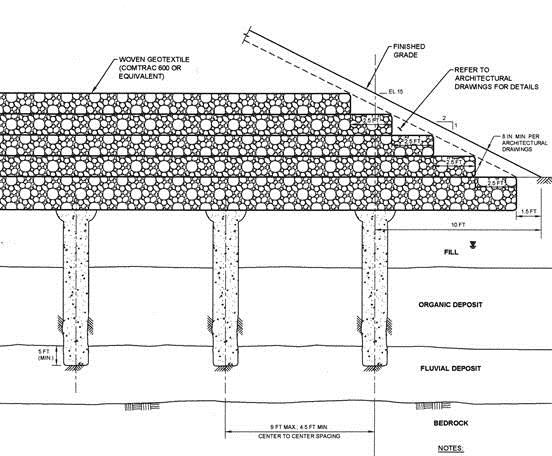
As pressure increases to understand capital cost prior to the first spade touching dirt, more and more healthcare owners are turning to a Parallel Estimating process to improve understanding of exposure and ensure a successful preconstruction phase and subsequent bid and award. When procuring a project with a Construction Manager (CM) under a Guaranteed Maximum Price (GMP) contract, (also referred to as a CM at Risk), there are definitive advantages to employing an owner’s representative cost estimator to triangulate estimating in the preconstruction process and produce a parallel estimate. Since a GMP contract transfers project risk to the CM, Parallel Estimating or triangulation is an effective way to validate the GMP developed by the CM and understand just how much risk has been built into the number. of exposure and ensure a successful preconstruction phase and subsequent bid and award. When procuring a project with a Construction Manager (CM) under a Guaranteed Maximum Price (GMP) contract, (also referred to as a CM at Risk), there are definitive advantages to employing an owner’s representative cost estimator to triangulate estimating in the preconstruction process and produce a parallel estimate. Since a GMP contract transfers project risk to the CM, Parallel Estimating or triangulation is an effective way to validate the GMP developed by the CM and understand just how much risk has been built into the number.
On average, GMP projects can be as much as 2-5% higher than a project contract that is procured through a hard bid with a general contractor. While there are numerous reasons for this, aside from eliminating the competitive bid process, it is primarily due to the CM accepting complete responsibility for the project and the bid documents. Thus, the CM is at risk and will protect themselves as needed based on exposure, given the quality of the documentation the GMP is based on. CM at Risk is typically used on complex and fast paced projects whereby the conditions and circumstances do not allow for a clear and easy bid process. In many instances, it is worth paying slightly more to have the CM manage and be accountable, especially if they base their GMP on insufficient documentation.
When an owner pursues a GMP procurement strategy, they are advised to engage a cost estimator to provide a secondary touch-point for risk identification and risk elimination. Having these two view points and opinions on scope, rates, quantity and constructability is an excellent way to flush out issues through the preconstruction process. This is often an unquantifiable benefit but the two contrasting views allow for a healthy discourse at the reconciliation meeting, highlighting areas of the project where both parties see risk and potential cost exposure.
Case Study #1
On a low lying flood plain, this project would accommodate numerous sports fields and recreational areas. Given the nature of its elevation, it would require large earth berms to allow bridges to connect the fields to the surrounding high level campus. These berms would require large, complex geotechnical solutions and a series  of gravel pyramidal “lifts” to stop subsiding. The healthcare team employed a parallel estimating approach. At the Schematic reconciliation, both the CM and the Estimator came to the table with different approaches and different costs for assembling the berms. Since there was significant cost involved in the two approaches, the process allowed for the owner and design team to assess the cost and risk involved with both and highlighted the necessity to solve the geotechnical solution before the next round of estimating. By merely highlighting the risk, the process escalated the need for a geotechnical direction, solidifying the approach and the cost exposure early in the project. of gravel pyramidal “lifts” to stop subsiding. The healthcare team employed a parallel estimating approach. At the Schematic reconciliation, both the CM and the Estimator came to the table with different approaches and different costs for assembling the berms. Since there was significant cost involved in the two approaches, the process allowed for the owner and design team to assess the cost and risk involved with both and highlighted the necessity to solve the geotechnical solution before the next round of estimating. By merely highlighting the risk, the process escalated the need for a geotechnical direction, solidifying the approach and the cost exposure early in the project.
Risk Elimination in the GMP
As the CM is taking on the risk, from a business perspective, they will always understandably protect themselves when producing a GMP estimate. This is not a fault of the CM taking on the risk, but a reality of the nature of the contractual model chosen by the owner. Naturally, the incentive is not always aligned with the owner's desire to have the lowest cost project possible. A parallel estimating process allows the owner’s cost estimator to help manage the “risk” or “fluff” in the number. The approach should not be so definitive that the team is too aggressive with the GMP, but through accurate quantification, seeking market rates and validating assumptions and the nature of cross checking the approach, the triangulation should breed confidence with the CM to be more finite with their number.
Case Study #2
This particular project had close to a million square feet of office space. The majority of closed offices existed as standalone “pods” dotted around the space with glass walls and individual ceiling caps to make them cube-like. The ceilings were specified with a product called Baswaphon, a highly technical, sound absorbing panel with a trowel applied finish. At the reconciliation, the CM had the co st represented by an allowance on a cost per square foot basis. Given that the owner’s cost estimator was unfamiliar with the product, research on the product was conducted and the local supplier was identified and thus produced the quote that had been provided. The cost was $5 per square foot less than the allowance by the CM. This allowed the CM, a degree of confidence to reduce his GMP by $570,000. This is a classic example of how the parallel effort helps reduce the contingency held within the numbers. The estimating window is often very short as projects move fast, having two separate independent numbers often allows for a more collaborative process once around the reconciliation table. st represented by an allowance on a cost per square foot basis. Given that the owner’s cost estimator was unfamiliar with the product, research on the product was conducted and the local supplier was identified and thus produced the quote that had been provided. The cost was $5 per square foot less than the allowance by the CM. This allowed the CM, a degree of confidence to reduce his GMP by $570,000. This is a classic example of how the parallel effort helps reduce the contingency held within the numbers. The estimating window is often very short as projects move fast, having two separate independent numbers often allows for a more collaborative process once around the reconciliation table.
It Works Both Ways
The above case study demonstrates how the parallel estimating process reduces the GMP. The triangulation process can also eliminate risk in the other direction and often ensures the GMP is the “right” number in the sense of moving it higher.
While a CM looks to cover exposure with a GMP number, occasionally, depending on the economic circumstances, a CM could produce a low number in an effort to ensure the project proceeds and the contract is awarded. In these circumstances, a triangulation effort guards against an artificially low number and the subsequent costly aftermath of a tenuous and lengthy change order battle as the CM looks to recoup costs. The preconstruction process is never perfect and in some instances the triangulation effort helps capture scope missing from the CM’s GMP and while increasing the number, reduces risk to the client in the long run.
Case Study #3
On this 80,000 square foot building project, the owner employed two separate independent estimating teams to triangulate with the CM; one estimator representing the Owner and one estimator representing the Architect. Although this was an unusual  approach, three numbers certainly helped mitigate the risk and get a consensus on the right number. The local CM, experienced in the local market, was particularly inexperienced in the triangulation process and some of the misses in the preconstruction process were exposed through the diligence of the two parallel estimates. In one instance, it was identified that the CM had missed an entire elevation of the curtain wall. This was easy to do on such a complex, multi-elevation building, as the one in question. The omission was captured and therefore, all three estimates helped the team work towards the “right” number. approach, three numbers certainly helped mitigate the risk and get a consensus on the right number. The local CM, experienced in the local market, was particularly inexperienced in the triangulation process and some of the misses in the preconstruction process were exposed through the diligence of the two parallel estimates. In one instance, it was identified that the CM had missed an entire elevation of the curtain wall. This was easy to do on such a complex, multi-elevation building, as the one in question. The omission was captured and therefore, all three estimates helped the team work towards the “right” number.
Triangulation in preconstruction is a great method of implementing due diligence into the financial aspects of a construction project. It eliminates risk and validates the construction cost at each stage.
Given that no one is perfect, along with the fast paced nature of construction in the US, aggressive schedules drive the process. CMs, cost estimators and the like endeavor to understand, digest and calculate construction costs from vast quantities of drawings and specs in a defined period of time. Therefore, mistakes, assumptions and “plug” numbers are very common. A thorough and methodical preconstruction process with stage gate reconciliation touch points is an excellent way to assure clients, owners and stakeholders that the numbers are solid and the project is on budget through design ahead of committing to the GMP.
Reconciliation in the Healthcare Field
 There has been much success using the reconciliation process in the healthcare sector. Due to the nature of the work, the capital costs in healthcare are often significant and, given the complexity of these projects, lend themselves to this process. There has been much success using the reconciliation process in the healthcare sector. Due to the nature of the work, the capital costs in healthcare are often significant and, given the complexity of these projects, lend themselves to this process.
Typically, owners are looking at the costs as a secondary tier, beyond just the overall construction cost. Many owners have a desire to understand how much ICU areas cost in comparison with their cardiology wing and how much the ambulatory care department costs. Given this requirement to understand the costs programmatically, employing an independent Cost Consultant to lead the process is the best solution to drive the CM to follow suit and produce a GMP with similar breakdowns and transparency. Establishing the framework early is critical to setting up the preconstruction process for success.
Conclusion
A solid reconciliation process will instill confidence in the project team, owners and stakeholders as they move through preconstruction and aim to manage financial constraints and establish a realistic GMP.
Employing a fiduciary in the form of a cost consultant to oversee and coordinate this process drives value for owners in numerous ways. A cost consultant can assist clients in reducing risk, validating costs and guiding the projects teams to arrive, agree and award the “right” number. Following this path will ensure that the project stays on budget and stands the best chance of success without sacrificing desired scope and devaluing your investment.
 As Director of Cost Management for the Americas; Andrew brings a wealth of experience across a broad range of sectors from all aspects of a project’s timeline. Andrew has 18+ years of experience as a Quantity Surveyor with 12 of those years working in the Boston, Miami and New York markets. Through this period, Andrew has worked on up to $50B worth of construction around the world. Andrew specializes in working with clients at the very inception of a project, building a framework to match each client’s individual needs to ensure a strong, robust process through design and construction. Cost orientated and with an astute attention to detail, Andrew leverages his strengths in master-planning, budget and cost planning, cost estimation and reconciliation, cost management and control, and project benchmarking to provide the highest level of individual service to his clients. As Director of Cost Management for the Americas; Andrew brings a wealth of experience across a broad range of sectors from all aspects of a project’s timeline. Andrew has 18+ years of experience as a Quantity Surveyor with 12 of those years working in the Boston, Miami and New York markets. Through this period, Andrew has worked on up to $50B worth of construction around the world. Andrew specializes in working with clients at the very inception of a project, building a framework to match each client’s individual needs to ensure a strong, robust process through design and construction. Cost orientated and with an astute attention to detail, Andrew leverages his strengths in master-planning, budget and cost planning, cost estimation and reconciliation, cost management and control, and project benchmarking to provide the highest level of individual service to his clients.
For more information on Parallel Cost Estimating for a Capital Program please contact Andrew Sumner.
|

|

|
|
CBRE HEALTHCARE PERSPECTIVES
Are you looking for an article that ran last year? We have all previous articles of CBRE Healthcare Perspectives posted on our website. If you have any questions contact Susan Wadsworth, Director, Marketing
Click here for more information.
|
EDUCATIONAL INSIGHTS
All educational sessions are geared to assisting clients and industry partners in gaining a better understanding of the issues related to the Healthcare real estate and capital facility process. Sessions are free of charge, the only investment is your time.
Click here for more information.
|
 | |
|
INTEGRATED PROJECT DELIVERY
Integrated Project Delivery (IPD) has gained popularity over the years. CBRE Healthcare started a forum for open discussion on IPD, a place to explore the benefits of IPD, lessons learned from projects, and the real value IPD has to offer. Join the conversation and offer insights from current or past projects.
Click here for more information. |
|

|

|
|
FOLLOW US ON TWITTER
See what's going on within CBRE Healthcare and how we can provide real advantage to the healthcare real estate and capital facility process.
Click here for more information.
|
FOLLOW US ON LINKEDIN
Don't have Twitter? We are also on LinkedIn. Get CBRE Healthcare project updates, major news, and job listings.
Click here for more information.
|
CBRE Group, Inc. (NYSE:CBG), a Fortune 500 and S&P 500 company headquartered in Los Angeles, is the world’s largest commercial real estate services and investment firm (in terms of 2013 revenue). The Company has approximately 44,000 employees (excluding affiliates), and serves real estate owners, investors and occupiers through approximately 350 offices (excluding affiliates) worldwide. CBRE offers strategic advice and execution for property sales and leasing; corporate services; property, facilities and project management; mortgage banking; appraisal and valuation; development services; investment management; and research and consulting. Please visit our website at www.cbre.com.
|


 of exposure and ensure a successful preconstruction phase and subsequent bid and award. When procuring a project with a Construction Manager (CM) under a Guaranteed Maximum Price (GMP) contract, (also referred to as a CM at Risk), there are definitive advantages to employing an owner’s representative cost estimator to triangulate estimating in the preconstruction process and produce a parallel estimate. Since a GMP contract transfers project risk to the CM, Parallel Estimating or triangulation is an effective way to validate the GMP developed by the CM and understand just how much risk has been built into the number.
of exposure and ensure a successful preconstruction phase and subsequent bid and award. When procuring a project with a Construction Manager (CM) under a Guaranteed Maximum Price (GMP) contract, (also referred to as a CM at Risk), there are definitive advantages to employing an owner’s representative cost estimator to triangulate estimating in the preconstruction process and produce a parallel estimate. Since a GMP contract transfers project risk to the CM, Parallel Estimating or triangulation is an effective way to validate the GMP developed by the CM and understand just how much risk has been built into the number. of gravel pyramidal “lifts” to stop subsiding. The healthcare team employed a parallel estimating approach. At the Schematic reconciliation, both the CM and the Estimator came to the table with different approaches and different costs for assembling the berms. Since there was significant cost involved in the two approaches, the process allowed for the owner and design team to assess the cost and risk involved with both and highlighted the necessity to solve the geotechnical solution before the next round of estimating. By merely highlighting the risk, the process escalated the need for a geotechnical direction, solidifying the approach and the cost exposure early in the project.
of gravel pyramidal “lifts” to stop subsiding. The healthcare team employed a parallel estimating approach. At the Schematic reconciliation, both the CM and the Estimator came to the table with different approaches and different costs for assembling the berms. Since there was significant cost involved in the two approaches, the process allowed for the owner and design team to assess the cost and risk involved with both and highlighted the necessity to solve the geotechnical solution before the next round of estimating. By merely highlighting the risk, the process escalated the need for a geotechnical direction, solidifying the approach and the cost exposure early in the project. st represented by an allowance on a cost per square foot basis. Given that the owner’s cost estimator was unfamiliar with the product, research on the product was conducted and the local supplier was identified and thus produced the quote that had been provided. The cost was $5 per square foot less than the allowance by the CM. This allowed the CM, a degree of confidence to reduce his GMP by $570,000. This is a classic example of how the parallel effort helps reduce the contingency held within the numbers. The estimating window is often very short as projects move fast, having two separate independent numbers often allows for a more collaborative process once around the reconciliation table.
st represented by an allowance on a cost per square foot basis. Given that the owner’s cost estimator was unfamiliar with the product, research on the product was conducted and the local supplier was identified and thus produced the quote that had been provided. The cost was $5 per square foot less than the allowance by the CM. This allowed the CM, a degree of confidence to reduce his GMP by $570,000. This is a classic example of how the parallel effort helps reduce the contingency held within the numbers. The estimating window is often very short as projects move fast, having two separate independent numbers often allows for a more collaborative process once around the reconciliation table. approach, three numbers certainly helped mitigate the risk and get a consensus on the right number. The local CM, experienced in the local market, was particularly inexperienced in the triangulation process and some of the misses in the preconstruction process were exposed through the diligence of the two parallel estimates. In one instance, it was identified that the CM had missed an entire elevation of the curtain wall. This was easy to do on such a complex, multi-elevation building, as the one in question. The omission was captured and therefore, all three estimates helped the team work towards the “right” number.
approach, three numbers certainly helped mitigate the risk and get a consensus on the right number. The local CM, experienced in the local market, was particularly inexperienced in the triangulation process and some of the misses in the preconstruction process were exposed through the diligence of the two parallel estimates. In one instance, it was identified that the CM had missed an entire elevation of the curtain wall. This was easy to do on such a complex, multi-elevation building, as the one in question. The omission was captured and therefore, all three estimates helped the team work towards the “right” number.  There has been much success using the reconciliation process in the healthcare sector. Due to the nature of the work, the capital costs in healthcare are often significant and, given the complexity of these projects, lend themselves to this process.
There has been much success using the reconciliation process in the healthcare sector. Due to the nature of the work, the capital costs in healthcare are often significant and, given the complexity of these projects, lend themselves to this process.




